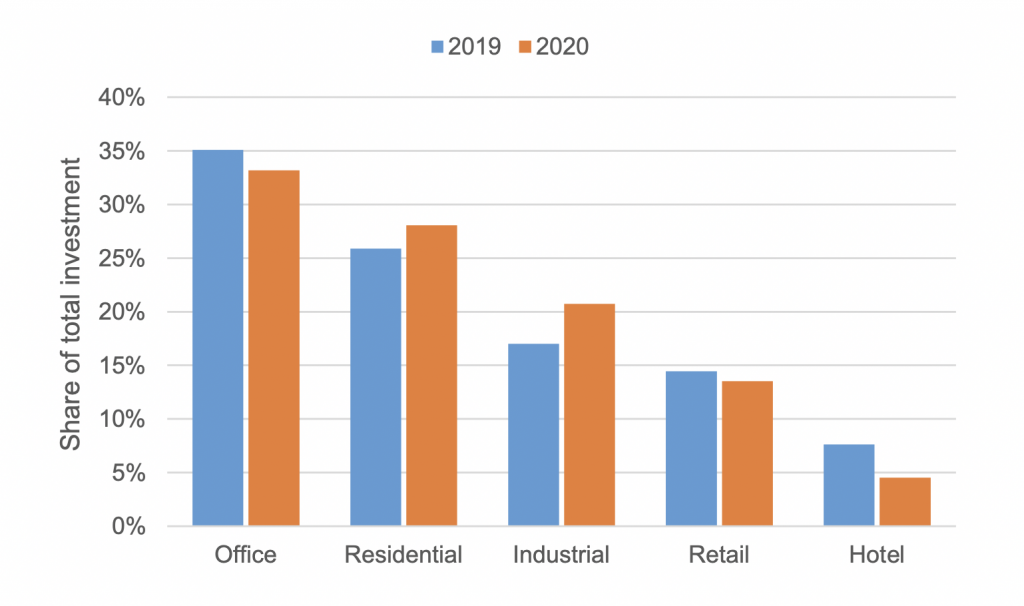After the exceptional challenges brought by covid-19, the distribution of a vaccine brings new hope for 2021. Sustained economic recovery is now on the horizon, led by advanced economies where vaccines are being introduced first. This should fuel wider real estate investor confidence.
Global GDP growth in 2021 is forecast to be the fastest in 40 years, according to Oxford Economics, albeit only enough to return global GDP to pre-crisis levels.
Many advanced economies have taken a ‘whatever it takes’ approach to supporting economies, with ultra-low interest rates and quantitative easing programmes. These low interest rates will support real estate investment into 2021. Unlike during the global financial crisis, banks today are less geared, while non-bank lenders have expanded significantly. This provides borrowers with greater options in the recovery.
In spite of near-term uncertainty, the long-term appeal of real estate has held for investors
Travel restrictions and broader economic uncertainty led to a fall in deal volumes in 2020. In the 12 months to November 2020, global investment volumes were down by 28% compared with the same period in 2019.
Not all sectors felt this equally. The industrial and residential sectors saw more modest falls in volumes, gaining market share to capture 21% and 28% of total investment, respectively (see chart). The resilience of these sectors in the face of structural change means that’s a trend likely to continue in 2021.
In spite of near-term uncertainty, the long-term appeal of real estate has held for investors, and the number of funds targeting it have continued to rise. As of the beginning of Q4 2020, there are more than 1,000 funds in market – more than double the number in January 2016, according to Preqin. Funds are now targeting almost $300bn of investments. This suggests investor momentum moving into 2021.
The green agenda
Despite the challenges of 2020, the rising importance of environmental, social and governance (ESG) credentials for investors has continued to grow.
Across the globe, governments are making ‘climate emergency’ declarations and commitments to meeting net zero carbon in certain timeframes. To honour these commitments, new investment into green technology, energy and much more has been announced but also an increasing amount of regulation.
Real estate is under the spotlight as the built environment accounts for 40% of carbon emissions across the world. This will present challenges, but it’s also an opportunity for real estate investors to make a significant difference.
Share of total real estate investment, by year

Source: Savills Research using RCA, data covers 12 months to November of stated year
Sector investment outlook for 2021
- The pandemic accelerated a shift to online retail and flexible working patterns. In 2021 logistics is expected to be the major beneficiary, but the challenge for investors will be finding stock.
- Offices are forecast to remain the largest sector and the core investment of choice. Emphasis will be placed on lower-risk assets with stable income characteristics in the best locations.
- Residential may attract a growing share of global investment, supported by strong underlying fundamentals and cross-border investors growing and consolidating portfolios.
- Senior housing and healthcare are operational asset classes with long-term income potential. Ageing populations and an emphasis on health and wellbeing are expected to support expansion.
- Data centres are a rising alternative sector and offer opportunities for portfolio diversification. Yields are attractive and pent-up demand is likely to fuel growth in 2021, but barriers to entry are high.
- 2020 brought life sciences to the fore. A big increase in capital raising is forecast to spur real estate investment opportunities in a sector resilient to changes in working habits.








